Let’s get one thing straight. Texas is huge. It’s vast. Bloomin’ enormous. The Lone Star State makes up nearly a third of the entire Southern Tier route and it has taken us three weeks to cycle across it. Our journey has seen us cycle through lush forest, to hill country, to ranch land and through deserts.
It has included the incredible cities of Austin and El Paso and given us a taste of the Wild West. But today we crossed the border into New Mexico without hardly noticing it. Yet our sixth state is already proving to have a completely different character.
Anxious to give ourselves as much time as possible in case we faced another headwind, we left the Gardner Hotel just before seven – our earliest ever start. It was still dark and bitterly cold and before long our fingers were chilled to the bone. But a long slow climb out of the city soon warmed us up and our hearts lifted as we realised the firm hand of a tailwind had nestled firmly into our backs.
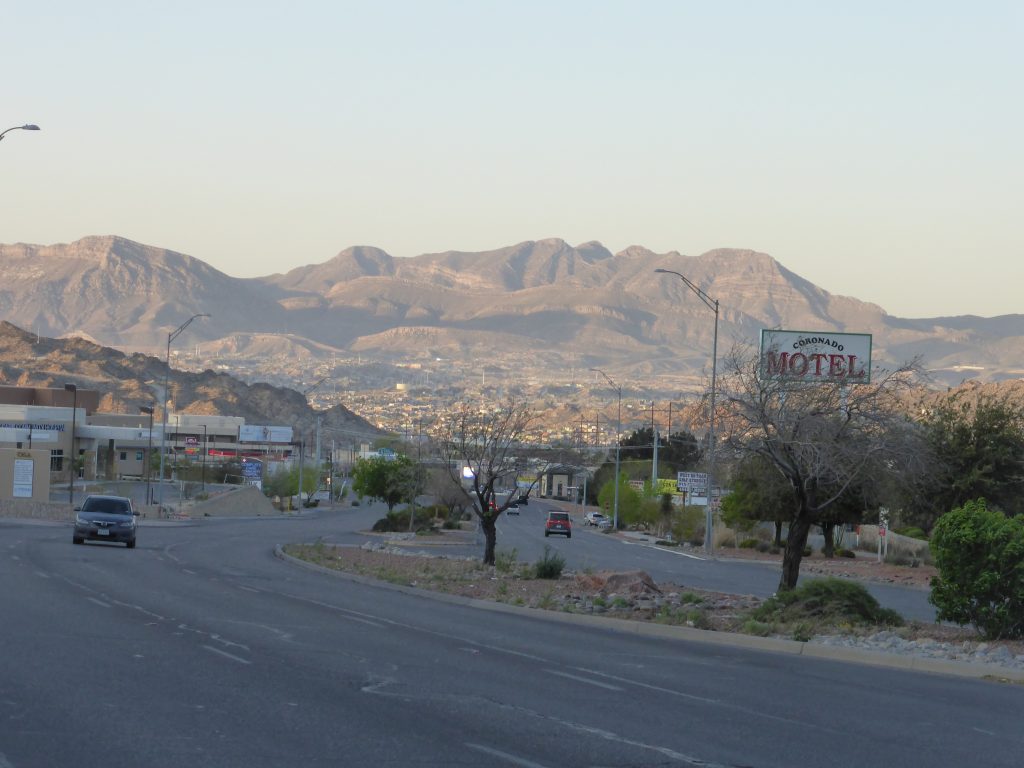
The Sunday morning traffic was light and we flew, cycling through a never ending strip of retail that went on for almost nine miles. Every chain in America seemed to be represented with each sign competing with the next for height, colour and garishness.
“We passed a Schlotzsky’s but sadly it hadn’t yet opened”.
The strip also highlighted the multicultural nature of El Paso. At one point I saw a mosque, quickly followed by a restaurant advertising itself as the Jerusalem Grill. One billboard advertised the 2019 Provost Gun Show, to be held at the Maida Shrine Temple. We passed a Schlotzsky’s but sadly it hadn’t yet opened.
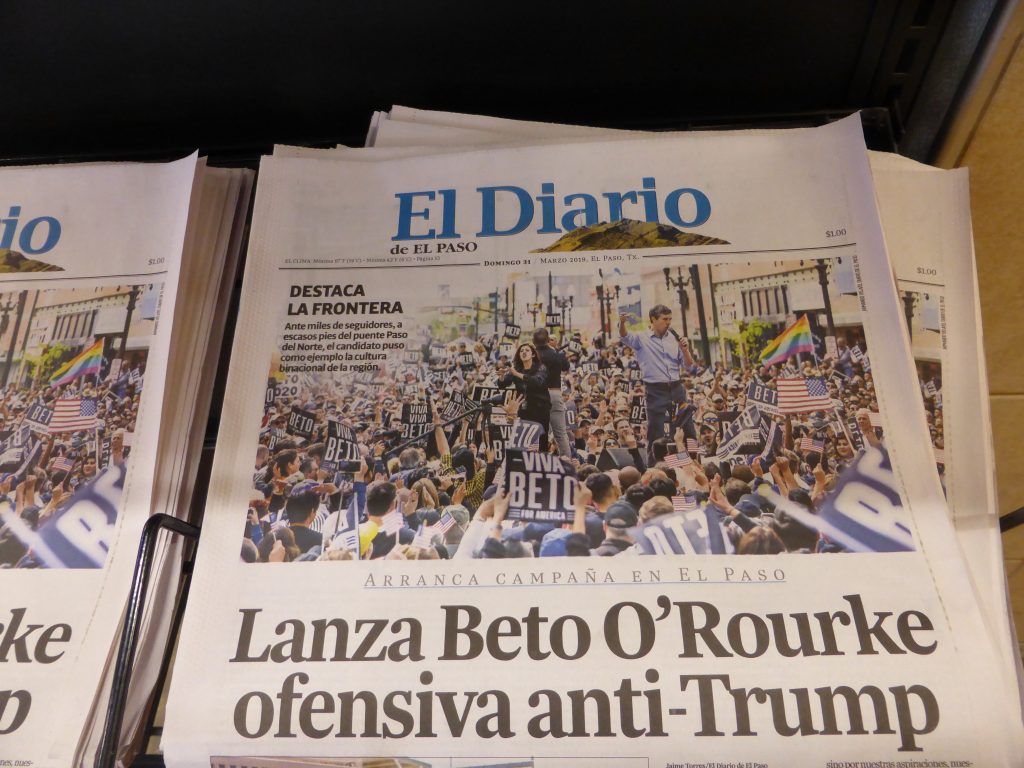
The Sunday morning traffic was light and we flew, cycling through a never ending strip of retail that went on for almost nine miles. Every chain in America seemed to be represented with each sign competing with the next for height, colour and garishness. The strip also highlighted the multicultural nature of El Paso. At one point I saw a mosque, quickly followed by a restaurant advertising itself as the Jerusalem Grill. One billboard advertised the 2019 Provost Gun Show, to be held at the Maida Shrine Temple.
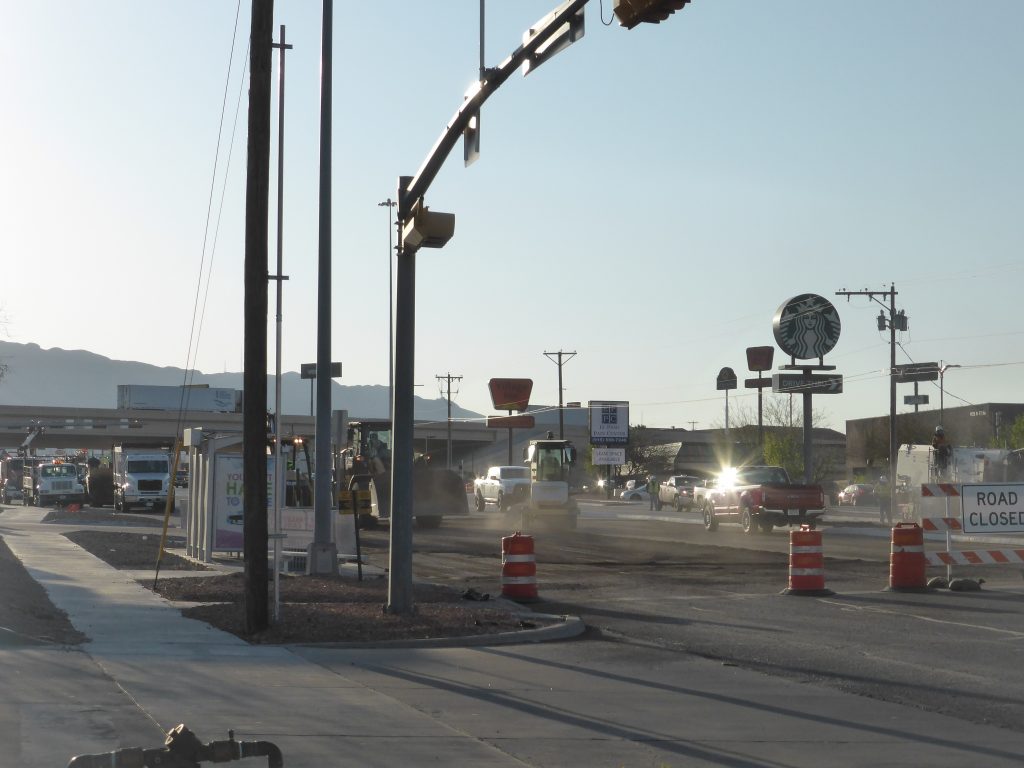
At the junction with the I10 we hit a barrier – the road was closed due to work being undertaken on the bridge and road, but a quick chat with a police officer sat in his car confirmed we could push the bikes through. It seemed our cycle helmets and bright clothing would suffice as our safety equipment!
Passing through the roadworks, the retail came to an abrupt stop and we entered a smart residential suburb. The name, Country Club Drive, said it all – tree lined avenues and expensive single storey Mexican-style homes. When we turned to cross the Rio Grande we got a real shock as the river bed was just a sea of sand.
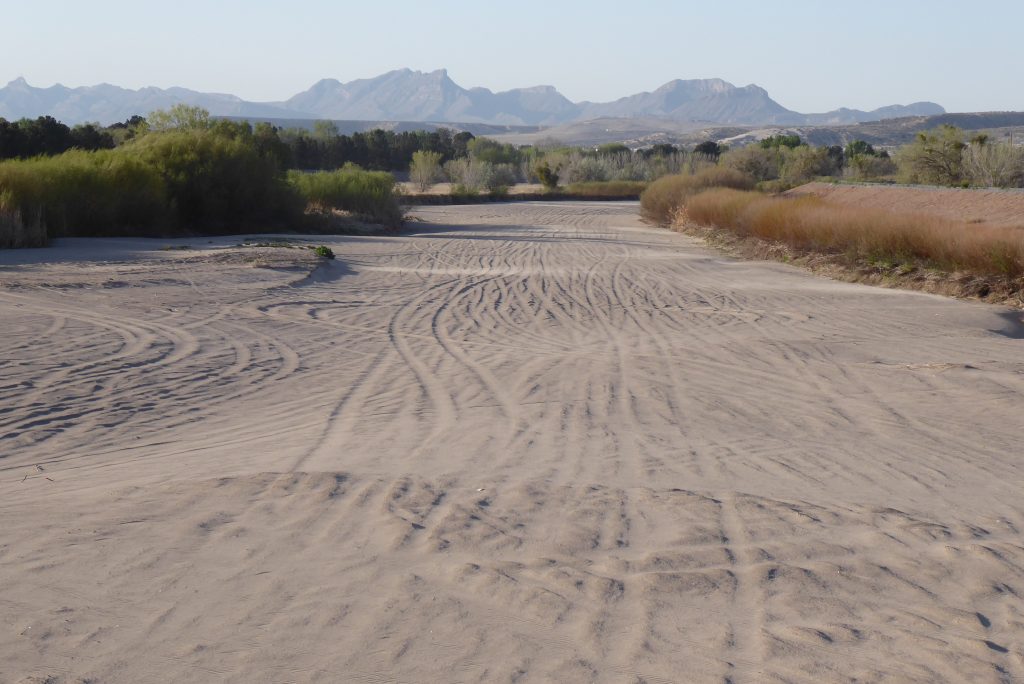
Consulting the map, it showed a cyclepath coming up alongside the river. Sounds good … but what it actually turned out to be was a cyclepath ON the Rio Grande floodplain. The river at this point is about 40m wide … and completely bone dry. It looks like a long thin sandy beach snaking off into the distance. Surprised and somewhat disappointed, cycling in the river bed did make a change though … no pecan plantations for the next few miles.
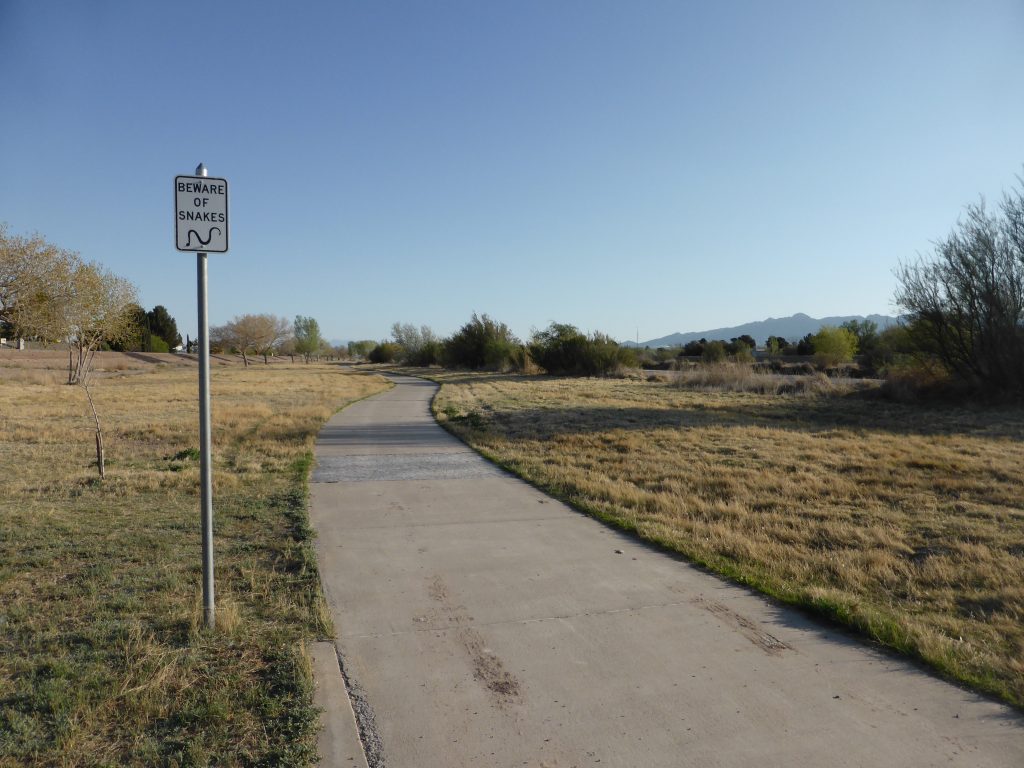
At Canutillo we hopped off the path for morning coffee at a gas station and Terry made up for the lack of pecans by mistakenly (or maybe subconsciously?) buying a pecan coffee. Our American cousins add so many flavourings to their coffee, everything from vanilla and caramel to hazlenuts and chocolate, that it can often prove impossible to find an unadulterated brew.
Parked close to the gas station were three massive oversized vehicles carrying gigantic wind turbine blades. Perhaps there is hope for the US. We haven’t seen a single wind turbine in operation so far, yet we’ve experienced plenty of wind! We’ve also only seen six solar panel installations in the Southern States.
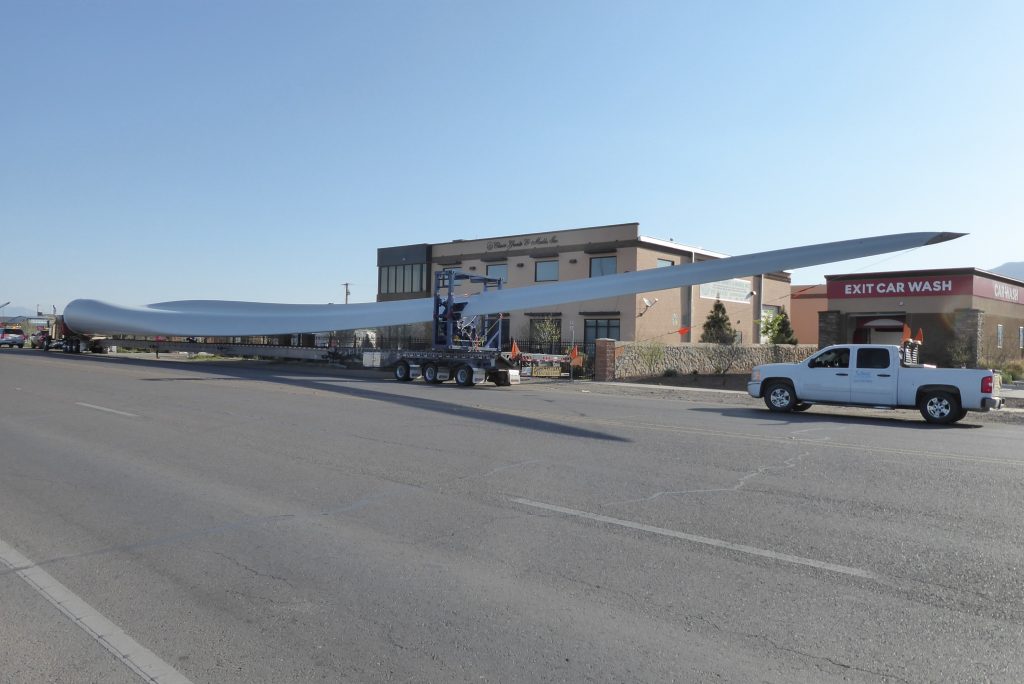
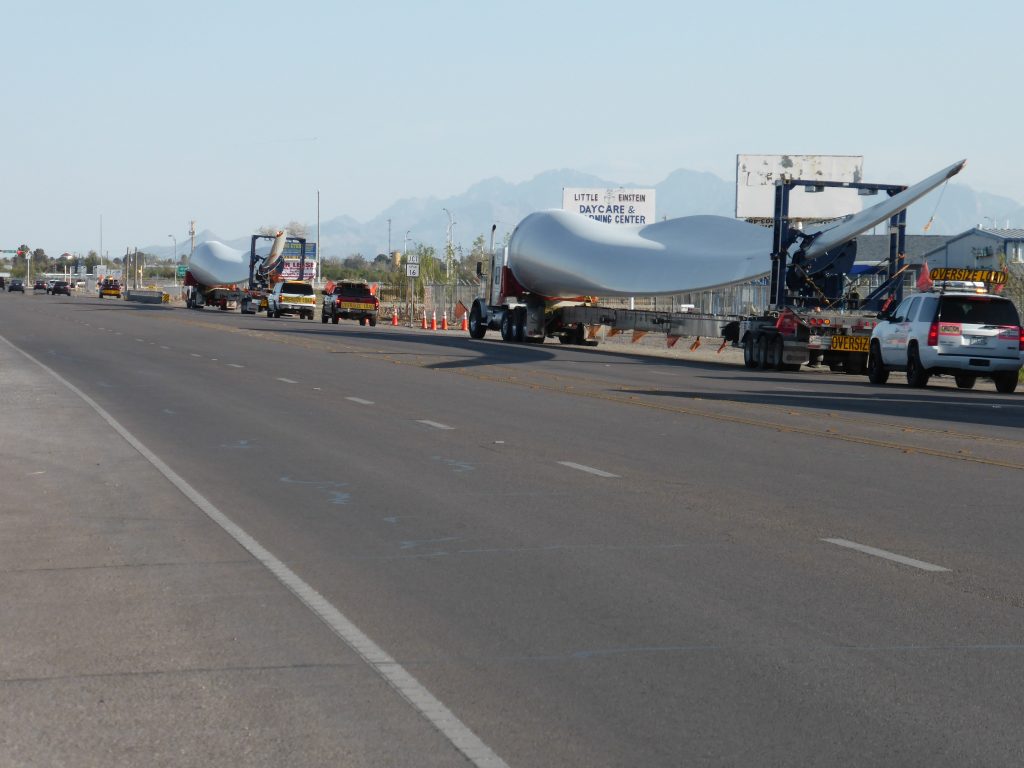
Cycling up to the gas station a woman was sitting in her pick-up truck, engine rumbling on regardless. Seems my campaign “Hey America – turn off the fucking truck!” has yet to gain momentum. Who needs wind or solar power when you’re sloshing around in coal and shale gas?
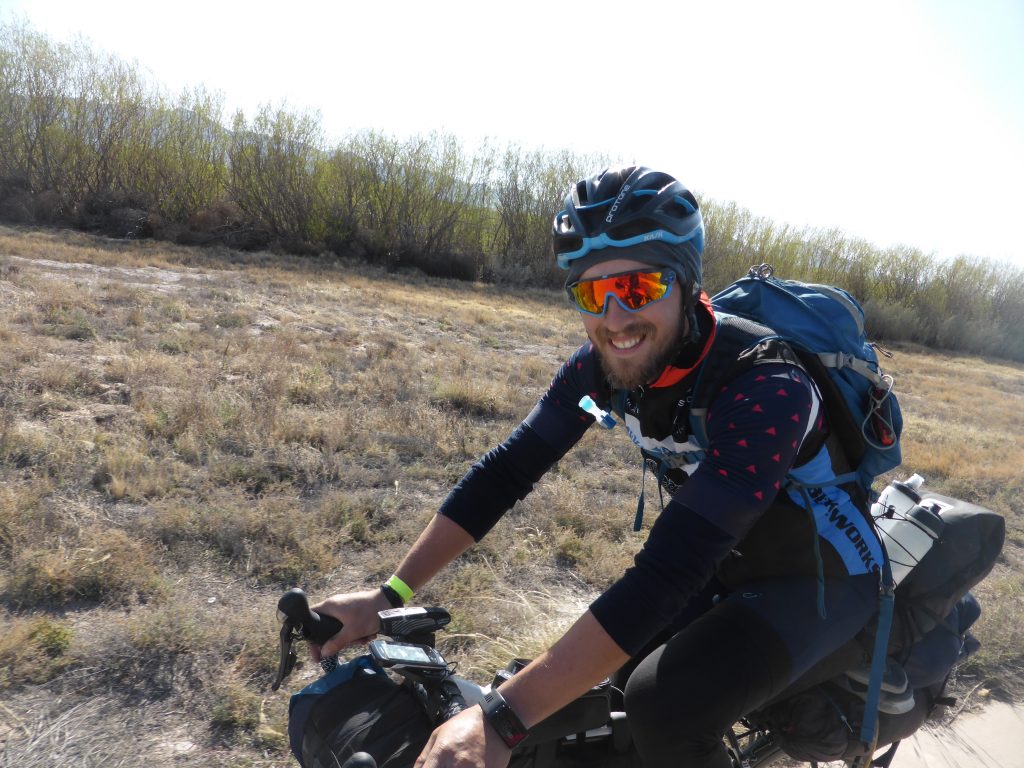
Rejoining the route, a cyclist on a bike-packing bike also going west caught up with us and the rider introduced himself as Pete. We’d seen his bike parked up in El Paso at the races the day before.
“The three of us rode together for a while, but he was on a much faster set up, with younger legs and soon he was off”.
He was gradually making his way cross country, following parts of the Southern Tier but ultimately heading to the Grand Canyon to go hiking with his family. The three of us rode together for a while, but he was on a much faster set up, with younger legs and soon he was off and into the distance.
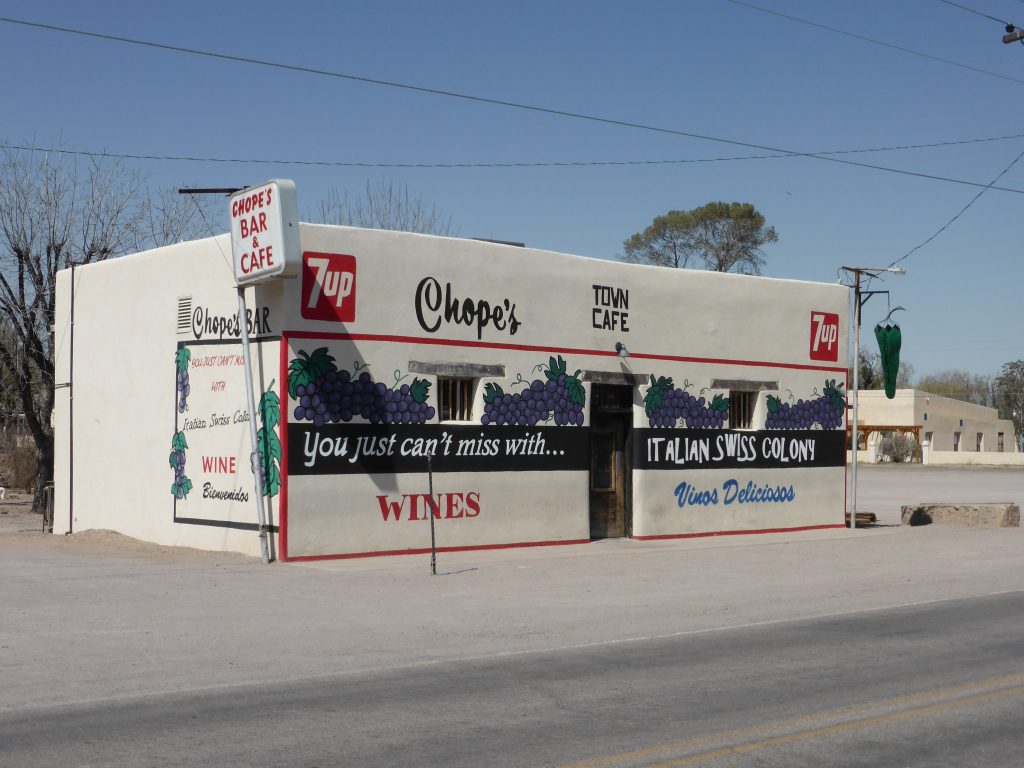
While we were riding with him we completely missed the transition from Texas to New Mexico – there was no official sign – but there was definitely a different feel about the place. The architecture was now dominated by colourfully painted one story flat roofed abode-style houses.
One thing that didn’t change though were the pecan tree plantations which went on for mile after mile with only the occasional break for another crop such as alfalfa or vines.
Oddly, the trees are either left to get 10-12m tall and then the tops are pruned or they are cut back to 2m trunks, painted white and left to sprout from there. The immaculately maintained soil around the trees appears to be routinely flooded … and that takes a lot of water … no wonder the Rio Grande isn’t looking quite so grand.
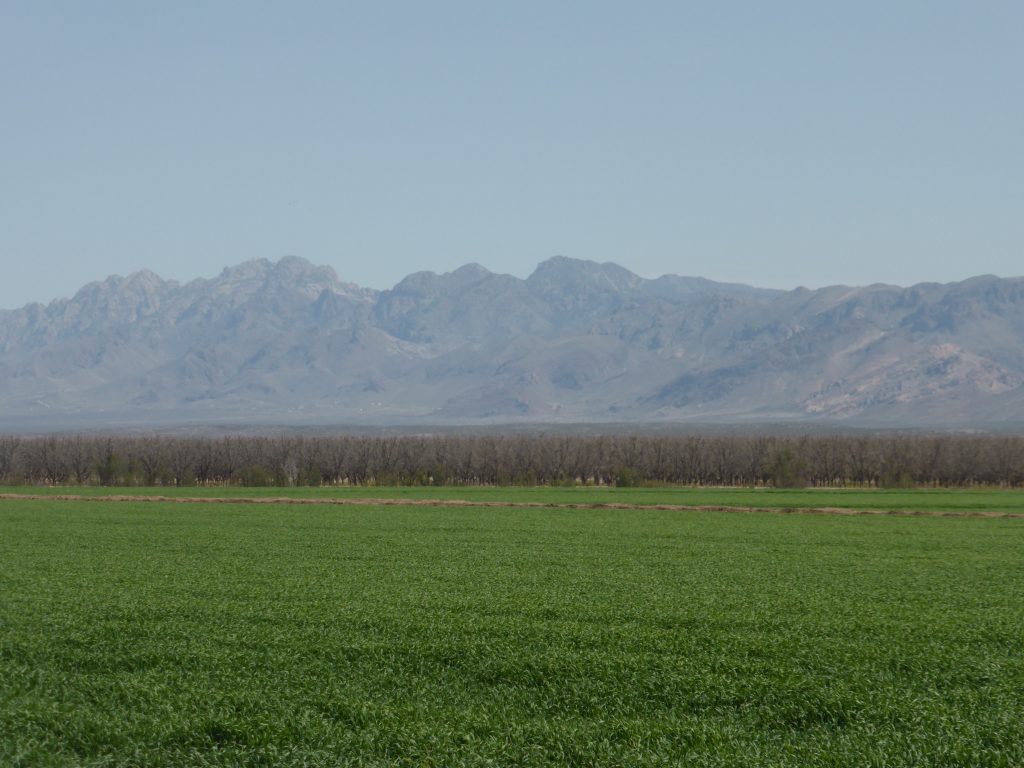
In La Mesa a lively and good natured game of baseball was taking place. The small towns we passed through seemed to have much more life and soul than the majority we’d seen east of El Paso. The village of San Miguel, broke the pecan monopoly (monotony?) with a small, award winning vinery.
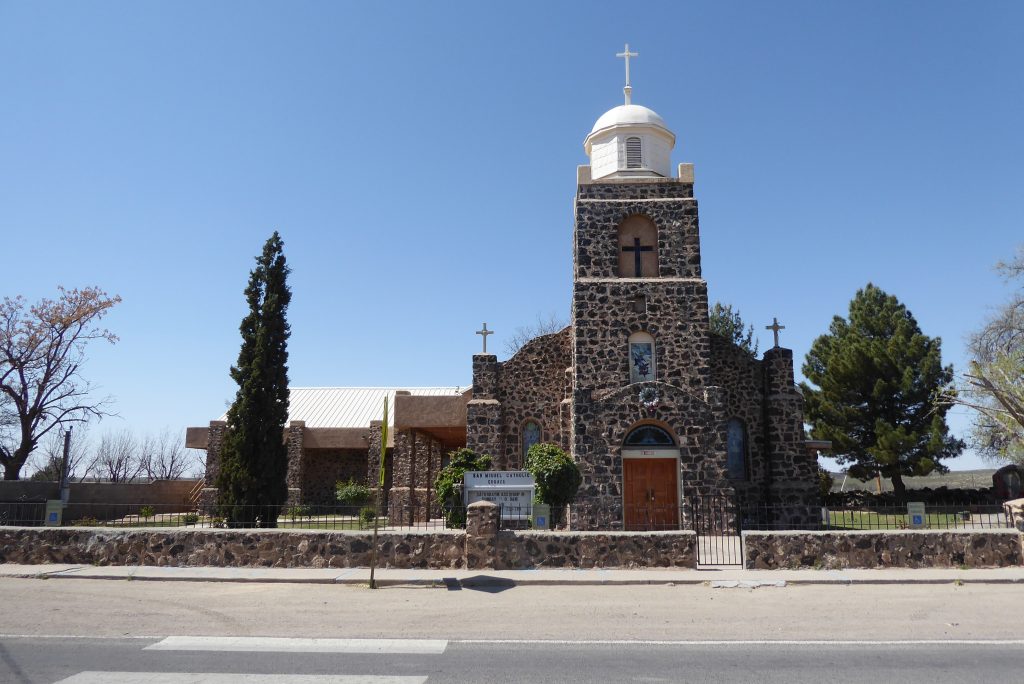
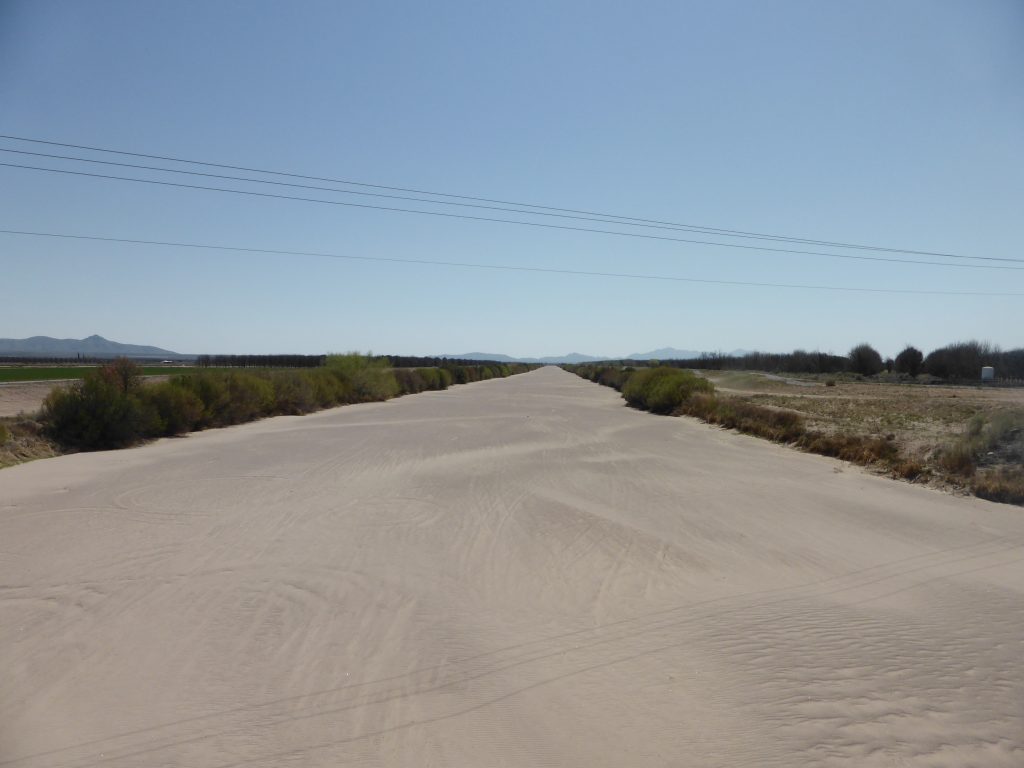

Mesilla proved to be a real surprise, not least because the first building we came across happened to be a microbrewery – The Spotted Dog – that sold pints, great food (both veggie and meat) and was frequented by numerous local cyclists whose bikes were parked outside.
Whilst ordering food and downing an obligatory beer Terry started tucking into the complimentary peanuts placed on the bar. Upon asking for a bowl to house his mountain of spent shells, he was told to just throw them on the floor!
“No way”! Terry replied, but the bar staff told him it was fine.
“Honestly”?
“Yes,” they nodded.
“I can’t do that, my mum would tell me off good and proper”!
They insisted.
So with a flourish, Terry swept them all onto the floor and got a round of applause for his efforts.
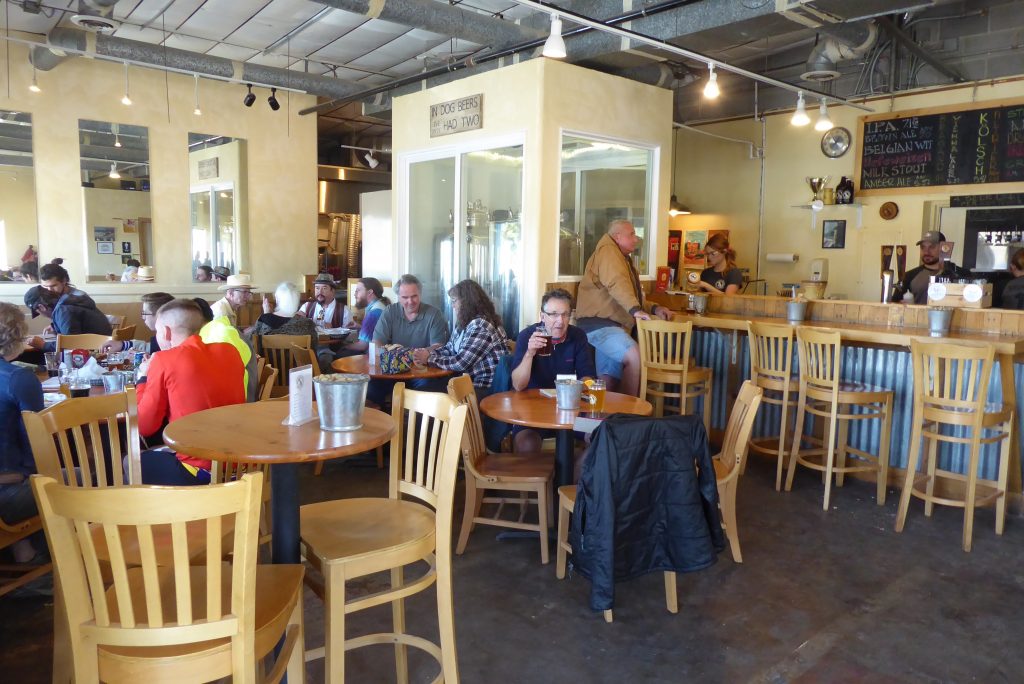
We could have stayed in The Spotted Dog all day long, but we resisted a second pint and reluctantly got back on our bikes.
Cycling on further, Mesilla also boasted a beautiful, although touristy, Plaza, bordered by historical buildings, including the oldest documented brick building in New Mexico – although Terry pointed out it only out-dated his home by a decade. Mind you it probably had a more interesting history:
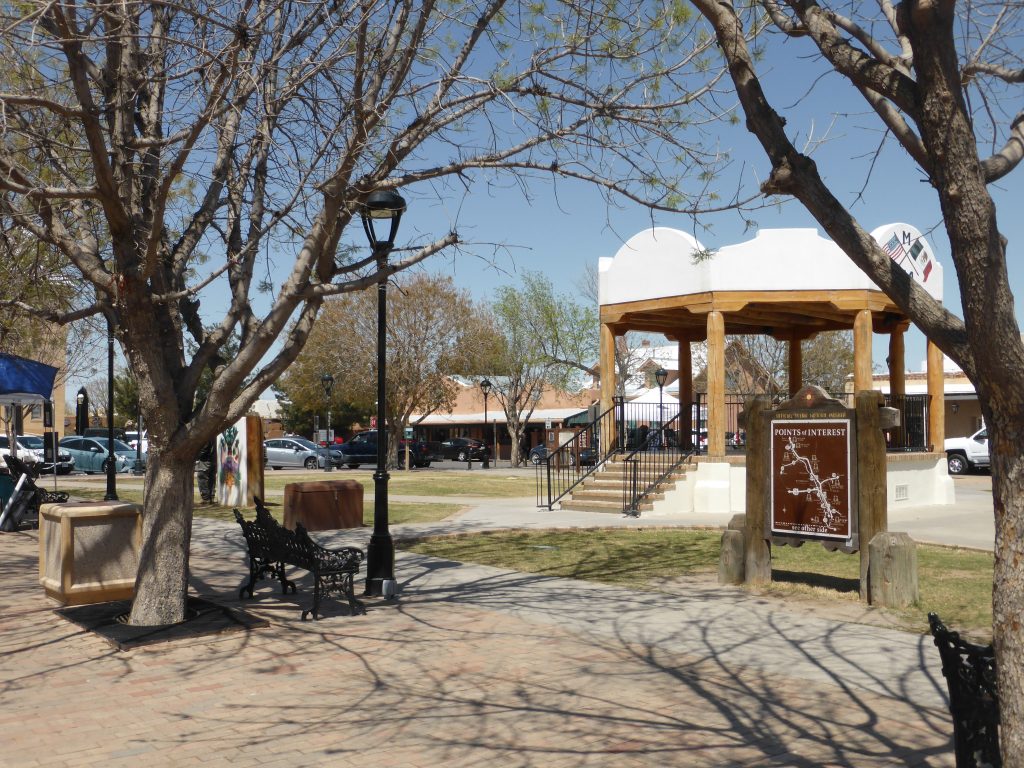

Augustin Maurin, who was of French descent, had started construction of the Thunderbird de la Mesilla in 1860 using burned brick from his own kiln. He was murdered by robbers in his adjoining apartment in 1866.
“It’s no good boasting about the age of your house if you haven’t got a good back story”!
His heir Cesar Maurin came from France to claim the properly and died of natural causes in 1868 after which Frenchman Pedro Duhalde moved in and was himself murdered by robbers.
In its time the building has been used as a general store, home, saloon and town hall. (You see Terry, it’s no good boasting about the age of your house if you haven’t got a good back story!)
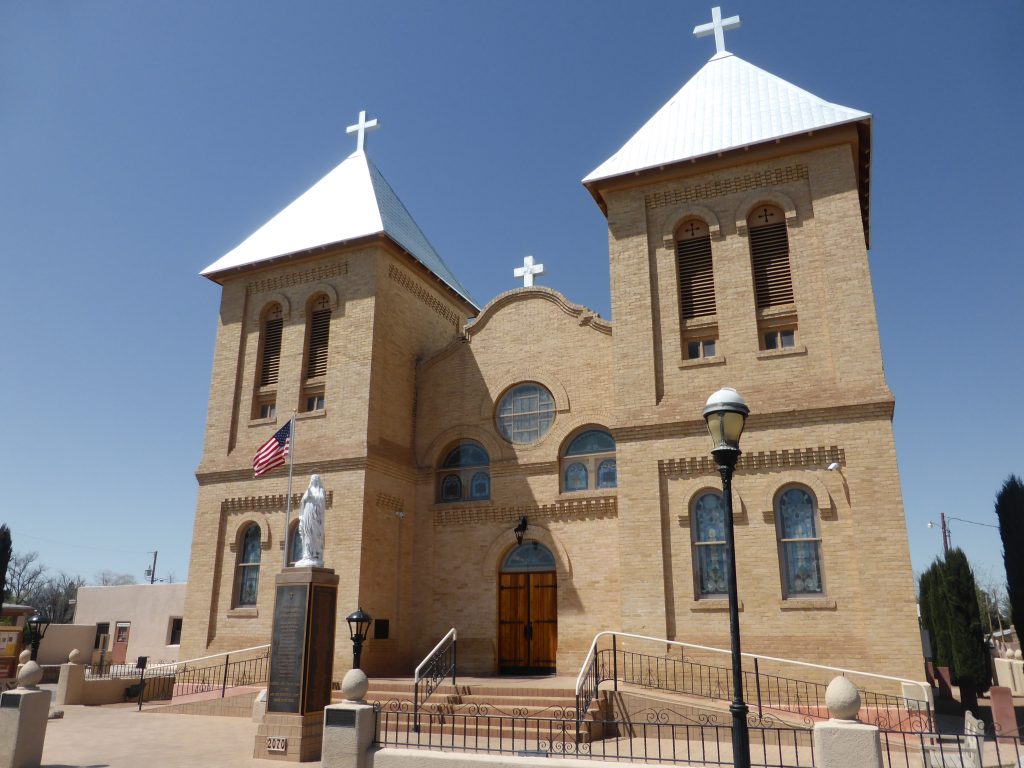
Although the San Albino Basilica was probably the most cultural attraction, our eyes were drawn to the Billy the Kid Gift Shop. This rather modest single story building ,which dated from 1850, once housed the Capitols of Arizona and New Mexico and later served as the courthouse in which the outlaw and gun-fighter Billy the Kid, was tried and sentenced to hang.
The Kid, real name Henry McCarty (although he also used the pseudonym William H Bonney), was undeterred at his sentence and escaped jail killing two deputies in the process and remaining at large for two months.
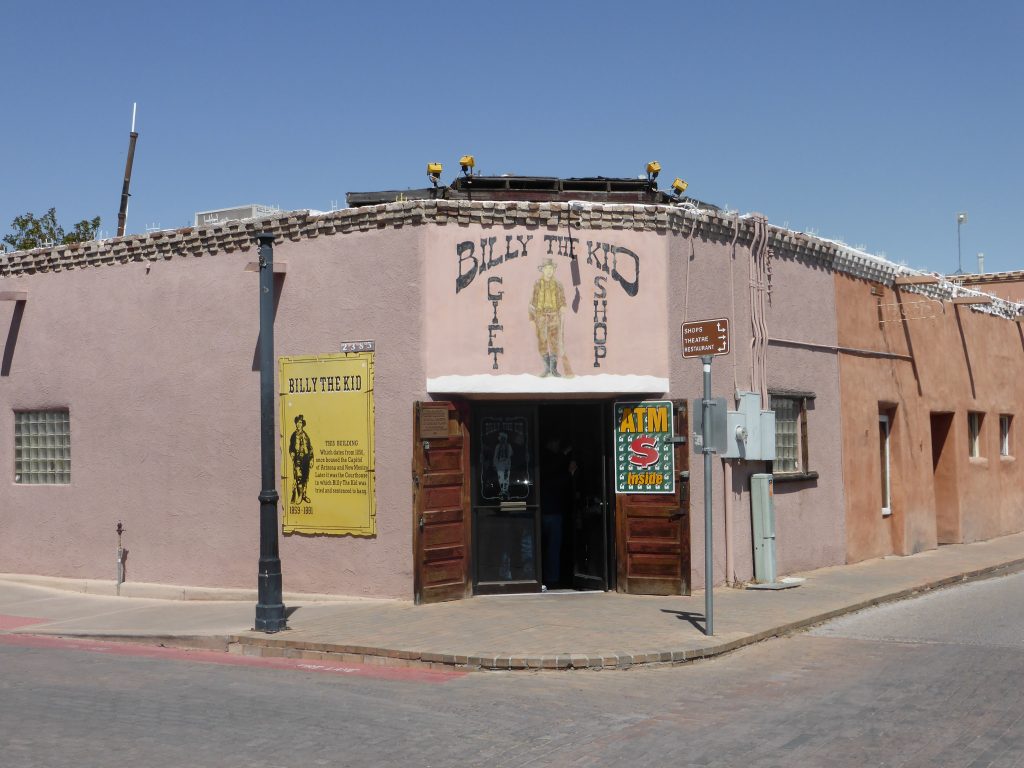
When he was eventually shot and killed at the age of 21 in July 1881 he’d killed at least eight men.
There were those who said Billy had survived and was still on the run, but even if that were true he’d have been in the ground for at least a hundred years by now, or no doubt Terry and I would have met him somewhere along the road. Personally I didn’t rate our chances, armed as we were with two bicycle pumps and some trail mix.
“At one point Terry found me riding in the middle of a busy two-way road, between two narrow yellow lines”.
Unfortunately the beer had gone straight to my head and at one point Terry found me riding in the middle of a busy two-way road, between two narrow yellow lines. I thought it was a cycle lane. It wasn’t! A second pint probably would have been fatal. Out of town, the cycling was less confusing you only had to cycle between two lots of those seemingly everpresent pecan trees … in a six mile straight line all the way to the Leasburg State Park.
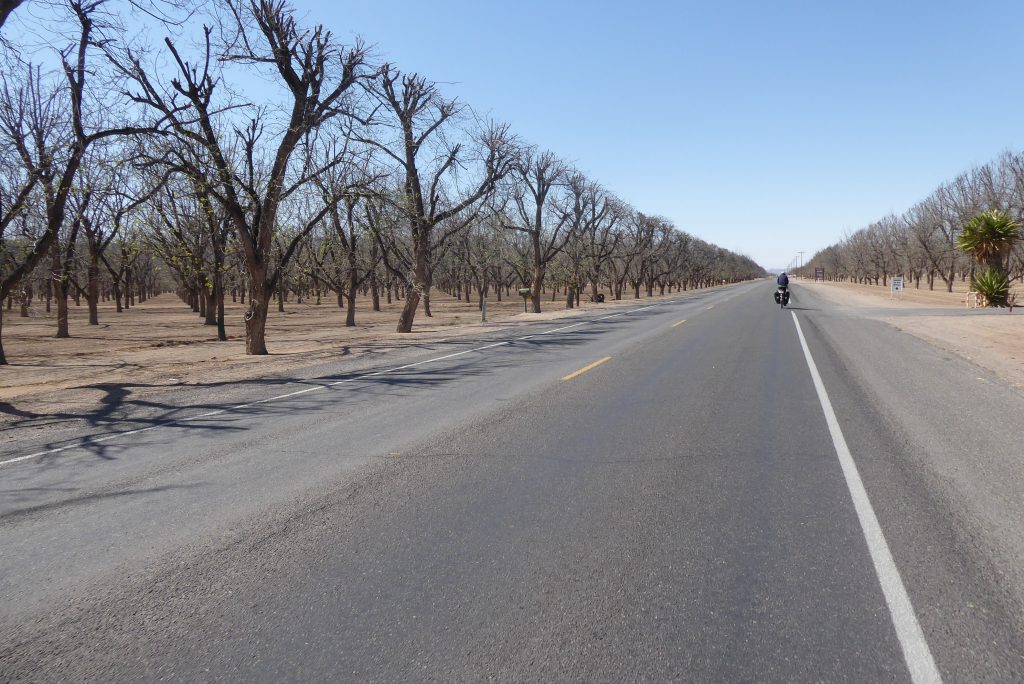
After a stop at Walmart for supplies we raced effortlessly onwards to Radium Springs (it makes such a difference having the wind behind you) and our intended nightstop at the Leasburg Dam State Park. On our way into the park we rode past the remains of Fort Selden, an adobe-built fort established by the army in 1865 to protect westward settlers from Native American raids. It fell into disrepair after the Civil War and was abandoned in 1891.
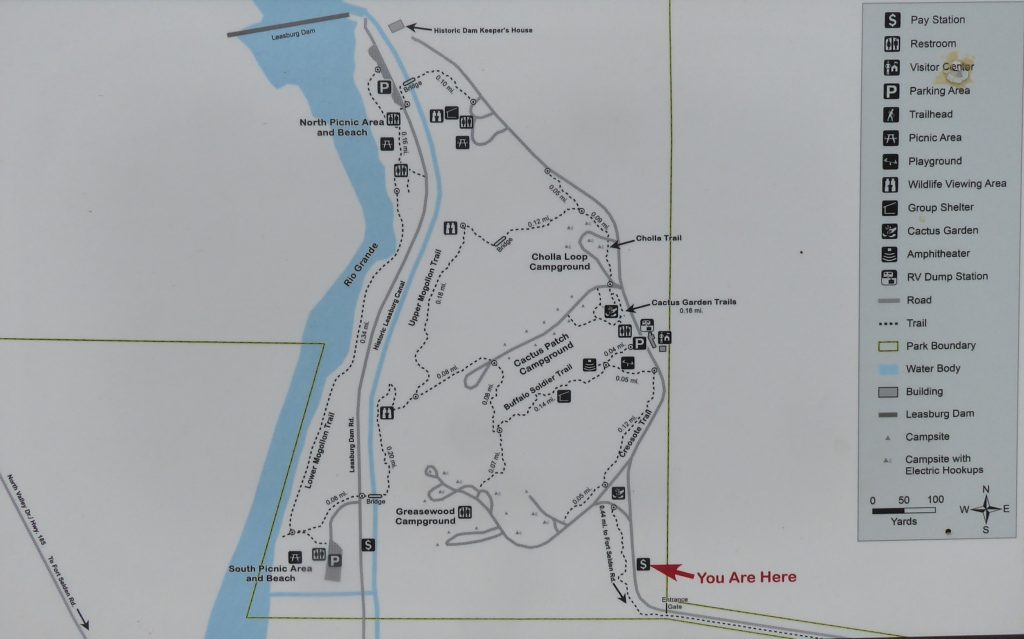
Sadly there was no time to look around as we needed to book a campsite for the night. The park noticeboard and website both said it was full, although spotting a ranger on the way in, he managed to find us a pitch. Unfortunately when we arrived it turned out to be a hard standing, complete with its own shelter, making it impossible to put our tents up. Once again we’d forgotten that the U.S. definition of camping is to turn up in a vehicle the size of most people’s houses, plug into the mains and switch on the TV.
We went for a walk along the dried up bed of the Rio Grande and kept our eyes out for alternative spots to put up our tiny tents. We’d learned from the ranger that the river has been completely controlled by man since 1919.
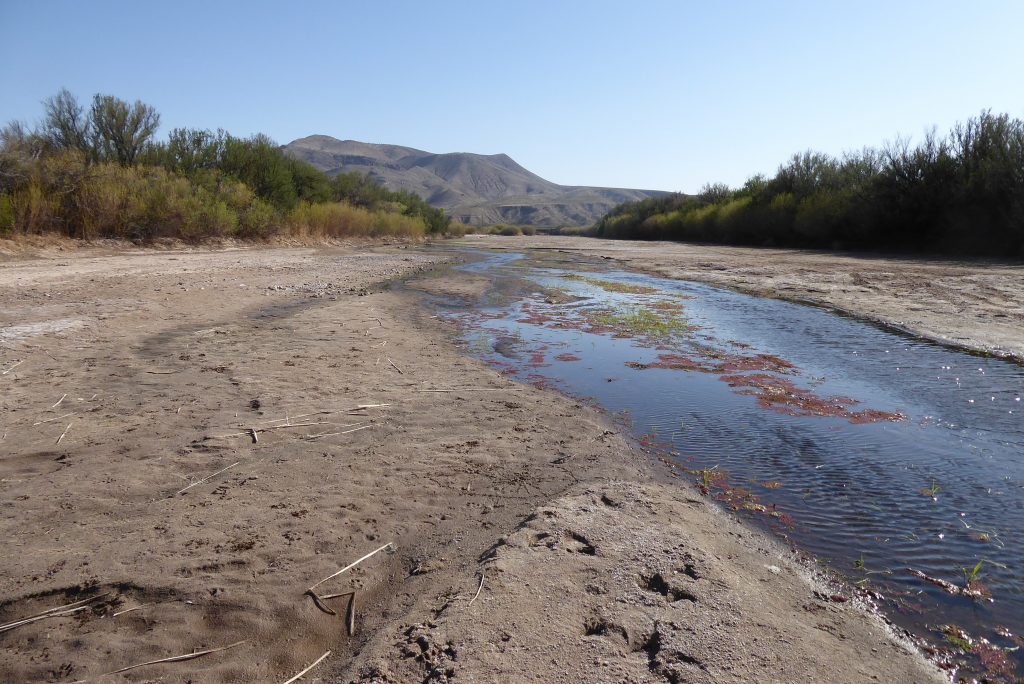
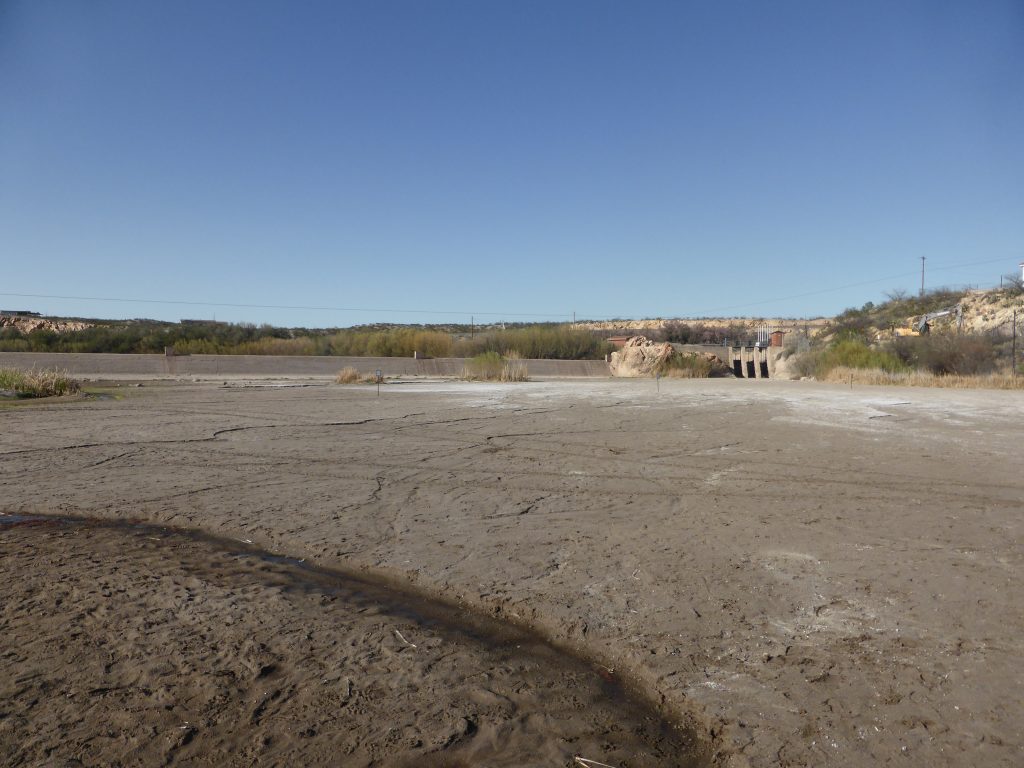
Nowadays the mighty Rio Grande only flows downstream between April and September and this year we were told the dams that control its flow may not be opened until June and could be closed by July. So the Rio Grande would be in full flow for just one month. If that’s not a sign that we are taking far more from the environment than we are putting in then I don’t know what is.
Consequently what habitat there was for wildlife was living in a small pond near the dam itself. We saw a turtle and a couple of birds, but that was it. Back at our shelter we cooked up ramen and beans, knocked back with Bud Lights donated by a man from New Hampshire who camped here at this time of year to escape the cold – and bills!
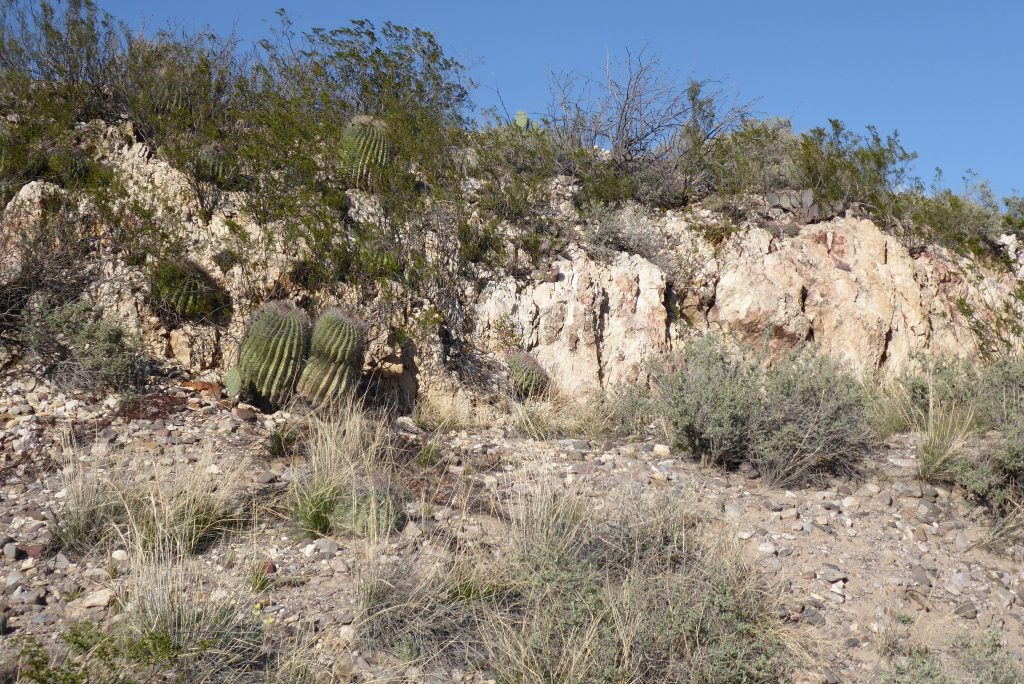
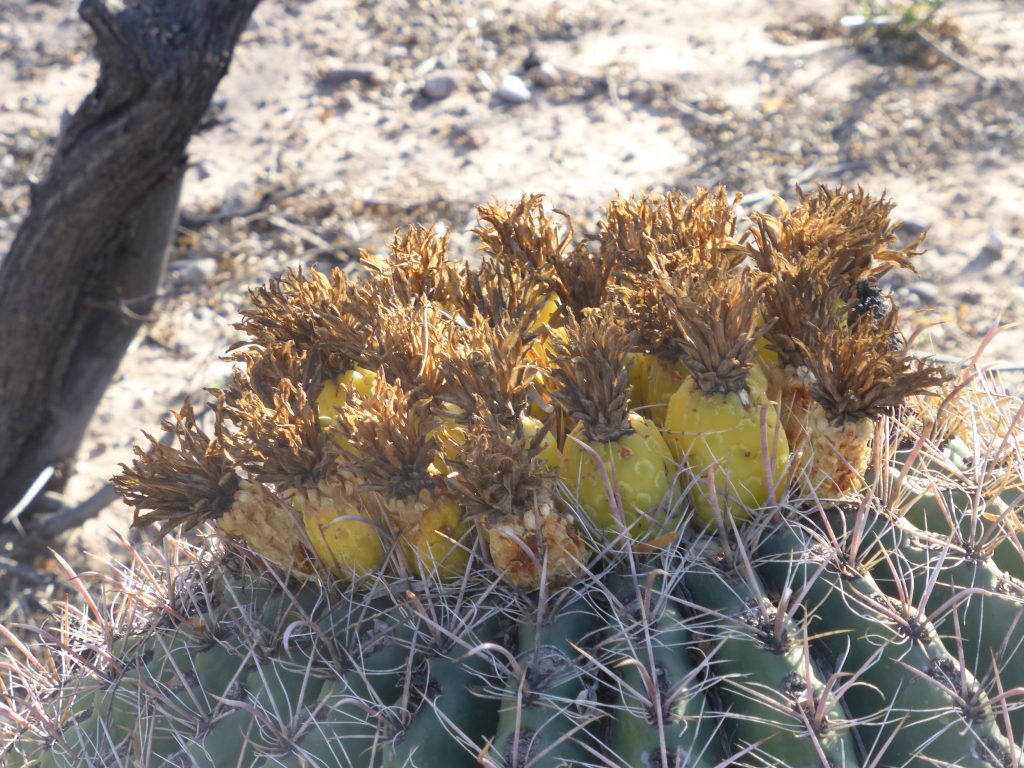
After chatting to one of the camp hosts, a wily old New Yorker who told us we weren’t supposed to camp anywhere else apart from the hard-standing, she appeared not to hear us as we suggested camping on one of the lower day sites, right next to the river.
So, as the sun went down, we snuck off to the nice, grassy, forbidden, daytime only area and fertively put our tents up. The skies were ablaze with stars, we heard numerous animal noises and – just before we went to bed – the wind began to whip up.
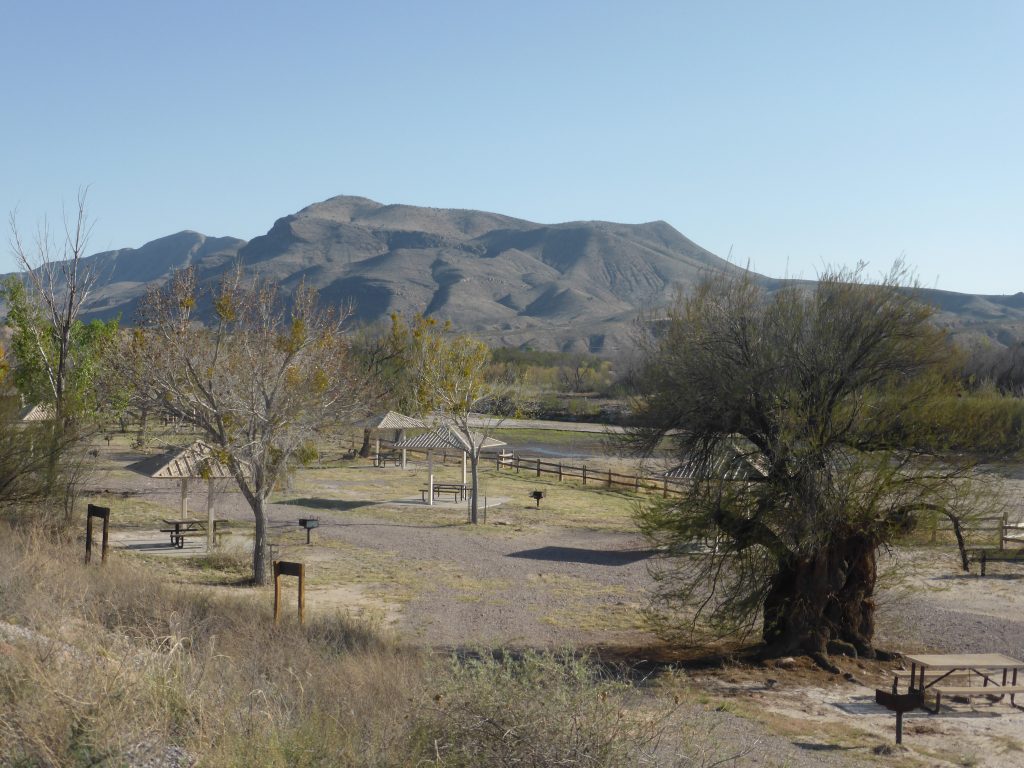
Was it a warning? We hoped not. We knew the park gates opened at 8am and we’d get fined if we got caught (even though we’d already paid for a pitch), so we set our alarms for 5.30am and tried to go to sleep, fearing the worst.
Naughty or what?!!
Today’s miles: 67.28
Total miles since Anastasia State Park: 2,151.14
